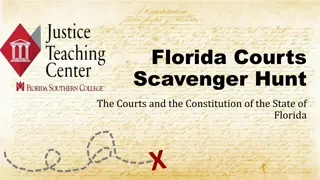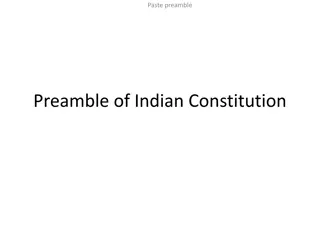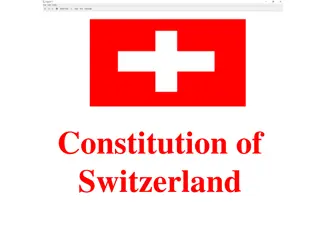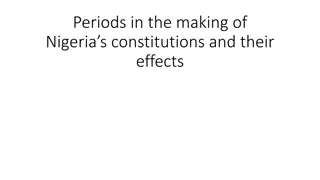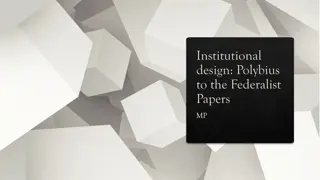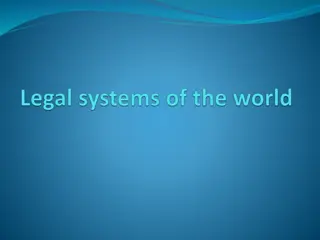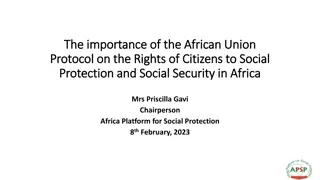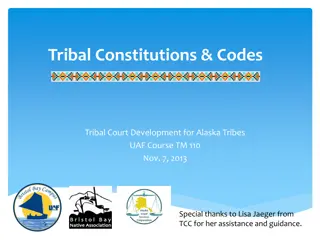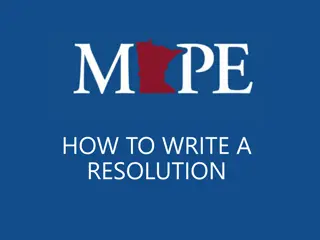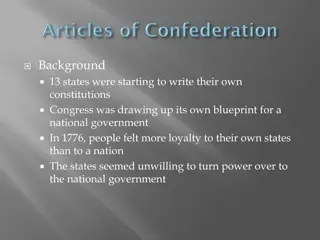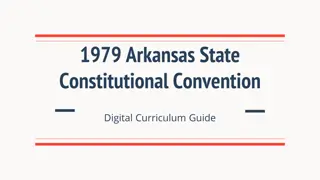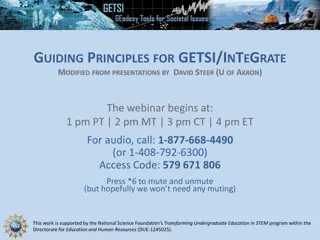Understanding Constitutions: Principles and Concepts
Contemporary constitutions outline the fundamental principles of the state, governmental structures, and citizens' rights in a higher law. Constitutions serve various functions such as defining political boundaries, expressing national identity, establishing rights and duties, regulating political institutions, sharing power, and setting social goals. They intersect legal, social, and political spheres and act as instruments marrying power with justice, shaping society, and guiding political decision-making.
Download Presentation

Please find below an Image/Link to download the presentation.
The content on the website is provided AS IS for your information and personal use only. It may not be sold, licensed, or shared on other websites without obtaining consent from the author. Download presentation by click this link. If you encounter any issues during the download, it is possible that the publisher has removed the file from their server.
E N D
Presentation Transcript
What is a Constitution? Principles and Concepts Dr. Fatih Serbest
1. Introduction The vast majority of contemporary constitutions describe the basic principles of the state, the structures and processes of government and the fundamental rights of citizens in a higher law that cannot be unilaterally changed by an ordinary legislative act. This higher law is usually referred to as a constitution.
2. The fundamentals of constitutions The functions of a constitution 1. Constitutions can declare and define the boundaries of the political community. 2. Constitutions can declare and define the nature and authority of the political community. 3. Constitutions can express the identity and values of a national community. 4. Constitutions can declare and define the rights and duties ofcitizens.
5. Constitutions can establish and regulate the political institutions of the community. 6. Constitutions can divide or share power between different layers of government or sub-state communities. 7. Constitutions can declare the official religious identity of the state and demarcate relationships between sacred and secular authorities. 8. Constitutions can commit states to particular social, economic or developmental goals.
The constitution at the intersection of legal, social and political life As legal, political and social documents, constitutions are at the intersection of the legal system, the political system and society.
Constitutions as legal instruments: A constitution marries power with justice (Lutz 2006: 17) it makes the operation of power procedurally predictable, upholds the rule of law, and places limits on the arbitrariness of power. It is the supreme law of the land, and it provides the standards that ordinary statutes have to comply with.
Constitutions as social declarations: Constitutions often attempt, to varying degrees, to reflect and shape society for example, by expressing the (existing or intended) common identity and aspirations of the people, or by proclaiming shared values and ideals. Constitutions as political instruments : The constitution prescribes a country s decision-making institutions: constitutions identify the supreme power , distribute power in a way that leads to effective decision making and provide a framework for continuing political struggle (Lutz 2006: 17).
Two constitutional archetypes Constitutions balance and reconcile these legal, political and social functions indifferent ways. Procedural constitutions: A procedural constitution defines the legal and political structures of public institutions and sets out the legal limits of government power in order to protect democratic processes and fundamental human rights.
Prescriptive constitutions: A prescriptive constitution emphasizes the foundational function of the constitution as a basic charter of the state s identity , which plays a key role in representing the ultimate goals and shared values that underpin the state (Lerner2011: 18). A prescriptive constitution may be appropriate in cases where a society wish esto re-establish itself on a shared ethical basis that is both symbolically proclaimed by, and practically embedded in, its supreme law. South Africa (1996) and Ecuador (2008) provide examples of prescriptive constitutions. It should be remembered that these archetypes are not firm categorizations.Most constitutions contain, to varying degrees, both features. According to South African Constitutional Court Justice Albie Sachs, constitutions can be regarded as autobiographies of nations (Austin 2009).
What does a constitution typically contain? Divisions: Most constitutions are divided and sub-divided into parts that may variously be known as titles, chapters, articles, sections, paragraphs or clauses. Arrangement: Constitutions vary in the arrangement of their provisions, although it is now usual for principles and rights provisions to be placed in a separate section near the beginning of the text, for the main institutional provisions to be grouped in the middle of the text, and for independent institutions, miscellaneous provisions and amendments to be placed near the end of the text
The layout of a typical constitution might resemble the following: 1. Preamble 2. Preliminaries 3. Fundamental rights 4. Social and economic rights or policy directives. 5. Parliament or legislature 6. Head of state 7. Government (in a parliamentary or semi-presidential system) 8. Judiciary 9. Sub-national government 10. Provisions for referendums. 11. Institutions of the 'fourth branch' or integrity branch (e.g. electoral commission, ombudsman, auditors). 12. Security sector 13. Other miscellaneous provisions 14. Amendment procedures, implementation timetable and transitionary provisions.
Box 2.1. Reading between the lines The constitutional order can include, in addition to the constitutional text itself, other written legal or quasi-legal instruments with constitutional significance. These may typically include electoral laws, laws on party financing, laws on judicial appointments and on the organization of the courts, international treaties, the standing orders of parliament and judicial decisions (Palmer 2006).
Size and length Constitutions vary in length from a few thousand words (Iceland, Latvia) to more than 50,000 words (India). Newer constitutions tend to be longer than older ones, and federal constitutions longer than unitary ones.
The constitution and the constitutional order Despite the proliferation of nominally democratic constitutions, only a minority of states have so far succeeded in maintaining a lasting democratic constitutional order. A constitutional order, in this sense, represents a fundamental commitment tothe norms and procedures of the constitution , manifest in behaviour, practice,and internalisation of norms (Ghai 2010). It is important to recognize at the outset that building a democratic constitutional order is a long-term process. Drafting the constitutional text is onlya small part of the challenge; it is also necessary to establish institutions,procedures and rules for constitution-making (preparatory stage); to give legal effect to the constitution (ratification and adoption) and, crucially, to ensure that the spirit and the letter of the constitution are faithfully implemented.
3. Constitutions and democracy Why have a constitution? Even the best constitution cannot pave a road or build a sewer; it cannot managea clinic or administer a vaccine; it cannot educate a child or take care of an elderly person.
Box 3.1. An analogy: the constitution as rules of the game Imagine two teams playing a game of football. If the team in possession of the ball could change the rules of the game and appoint its own referee, then the game would hardly be fair. One team would always win, and the other would lose or simply stop playing. This is like political life without a democratic constitutional order. The party, faction or group in power makes up the rules, and those in opposition are excluded from a game that is rigged against them. A democratic constitutional order acts like the rules of the game, and its guardians for example, a constitutional court are like the referee. They make sure that everyone can play the political game fairly.
This is because constitutional government ensures the fair and impartial exercise of power ; it enables an orderly and peaceful society, protects the rights of individuals and communities, and promotes the proper management of resources and the development of the economy (Ghai 2010: 3). In providing fundamental rules about the source, transfer, accountability and use of political power in a society, a constitution introduces a separation between the permanent, enduring institutions of the state, on the one hand, and the incumbent government, on the other (see Box 3.1). In this sense, constitutionalism is the opposite of despotism. Despotism is a system of government in which the governing authorities are a law unto themselves. Not all despotic governments are intolerably oppressive. In choosing to adopt constitutional government, people are choosing to say no to despotism and to the precariousness of living under rulers who can act arbitrarily.
Democratic constitutionalism as a global norm Modern democratic constitutionalism is based on two principles: (a) representative government, enabling citizens to participate in public affairs and hold their government to account; and (b) the protection of rights (especially the due process of law, freedom of speech and religious tolerance), through which citizens are insulated from abuses of power.
Elite accommodation Establishing a democratic constitutional order is not easy. Throughout history,only a minority of states have succeeded. Those who set themselves the task of establishing such a constitutional order must be mindful of the social and political, as well as the technical and legal, challenges they face. In posing such a challenge to elite rule, a democratic constitutional order can expect to encounter resistance from elites that are jealously protective of their power, privileges and wealth including, typically, members or associates of the old regime, economic oligarchs, military commanders and those with links to the security sector, as well as powerful donor nations or large foreign investors. To avoid this, elites might have to be appeased in specific areas that concern their most vital interests even though this may involve some difficult and perhaps painful compromises. However, if these compromises are too generous to vested interests, they can undermine the effectiveness and quality of the democratic constitutional order. In some cases, competing elites will tire of self-destructive conflict among themselves, and will embrace democratic mechanisms as a way of moderating and containing that conflict.
Inclusive bargains and precommitments [South Africa s Constitution] belongs to all of us, not just the ruling party, or one section of South Africa. We all wrote this collectively with our blood, some with their lives, with our tears and with our sweat. We claim it as ours, it enshrines the rights that make us live as South Africans, and we will protect it because it belongs to us. Cyril Ramaphosa, former African National Congress Secretary General(Nelson Mandela Foun dation 2012) In principle, constitutionalism, by making all citizens parties to a great bargain(an agreement of the people or a social contract), makes the state into a publicentity (res publica) a common possession of all the citizens, and not the possession of one person, party or section of society. Sometimes, a one-sided constitution emerges from a cynical and selfish attempt by one person or party to maintain power so that they alone can enjoy the spoils of office and can control the resources of the state for personal gain.
This is not to say that a constitution should avoid all discussion of values or that it should exclude all substantive content: both procedural and prescriptive approaches have their place, and where a broad public consensus exists as the basis for agreement, there can be a case for the inclusion of substantive and even transformational material. Because it depends on reaching an inclusive and relatively enduring set of higher laws through which ordinary political disputes will be channelled, constitution-building can be seen as a process that differs, in both purpose and nature, from ordinary law-making. Some scholars are sceptical of the principle of government by higher rules. In practical terms, however, the precommitments of constitutionalism can be seen as a form of collective self-binding, by which the participants in a political system bind themselves to fundamental rules so that incumbent holders of government office cannot dominate or manipulate the state. Another approach is to regard the constitutional documents that emerge from the constitutional bargains achieved during founding moments as expressions of the sovereign constituent power of the people. Interpretations of a constitution also evolve organically, between moments of foundation or refoundation, through the legislative acts, political conventions and judicial decisions that complete the constitutional framework.
Constitutions, corruption and good citizenship I feel that the constitution [of India] is workable; it is flexible and it is strong enough to hold the country together both in peace time and in war time. Indeed, if I may say so, if things go wrong under the new Constitution, the reason will not be that we had a bad Constitution. What we will have to say is that Man was vile. B. R. Ambedkar, Indian jurist and constitution-builder (Keer 1954: 410) Corruption is a much broader concept than the mere taking or payment of bribes; it covers all actions that put private interests above public interests in relation to legislation, policy and administration. In such conditions, good legislation and good policymaking become impossible, faith in political leadership and in democratic institutions is undermined and the constitutional order weakened often to the point of collapse.
Others have considered the need for good and principled leadership in a democratic constitutional order, and have sometimes attempted to embody a commitment to such principles in a particular constitution through leadership codes or standards for public life. In summary, the constitutional text, if it is to be the basis of a democratic constitutional order, must reflect and embody democratic values, but these values must themselves exist among the people.
References Ackerman, B., We the People, Volume 1: Foundations (Cambridge, MA: HarvardUniversity Press, 1993) Austin, R., Constitutional Reform Processes , in Sachs, A. et al., WritingAutobiographies of Nations: A Comparative Analysis of Constitutional ReformProcesses (The Hague: Netherlands Institute for Multiparty Democracy,2009) Dahl, R., Polyarchy: Participation and Opposition (New Haven, CT: YaleUniversity Press, 1973) Lerner, H., Making Constitutions in Deeply Divided Societies (Cambridge: Cambridge University Press, 2011) Lutz, D. S., Principles of Constitutional Design (Cambridge: Cambridge UniversityPress, 2006) King, A., Does the United Kingdom still have a Constitution?, Hamlyn LectureSeries (London: Sweet and Maxwell, 2001) Keer, D., Dr. Ambedkar: Life and Mission (Mumbai: Popular Prakashan, 1954) Palmer, M. S. R., Using constitutional realism to identify the completeconstitution:lessons from an unwritten constitution , Americ an Journal ofComparative Law, 54/3 (2006), pp. 587 636 E. F. Paul, F. D. Miller, Jr and J. Paul (eds), What Should Constitutions Do?(Cambridge: Cambridge University Press, 2011) Van Loon, R. J. and Whittington, M. S., The Canadian Political System: Environment, Structure, and Process (Whitby, ON: McGraw- Hill Ryerson,1987) Vidal, G., Inventing a Nation: Washington, Adams, Jefferson (New Haven, CT:Yale University Press, 2004) Viroli, M., Republicanism (New York: Hill and Wang, 2001)



